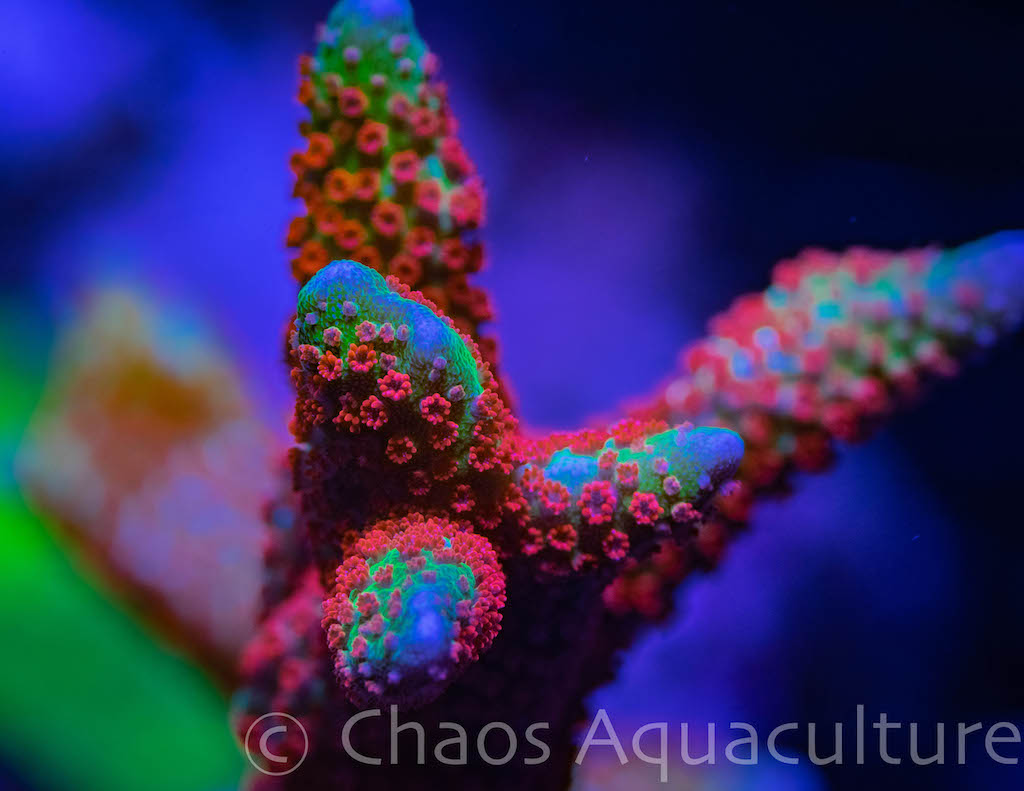A bit of a provocative question, but in all seriousness, I am a reefer returning after a 20 year hiatus and holy cow has the coral selection dramatically changed. I am curious where all these crazy color varieties have come from? 20 years ago, if you wanted zoa's, they were called "polyp rocks" and you could choose from brown or green, period. Now, there is clearly an endless variety of unreal colors in the zoa and paly space. Did they all come from selectively cultivating and propagating rare mutations found in the wild? Is this a situation similar to dogs being domesticated from wolves, just over a very short time horizon (15-20 years)?
In a related question, is there a good combined reference for all of these designer corals? One of the really big challenges I've had as a returning reefer, in so much as the explosion of designer named coral choices go, is understanding what the heck all these things are that are up for sale. It's really hard to google many of them because they often only result in lots of links to frags. It has been very hard to figure out what many of these frags grow up to be. I assume there is not or I would have stumbled on it in all my googling, but a hobbyist geared wiki where we could crowd source information and photos of full grown corals we are buying and selling would be a huge help to new, and probably not so new, hobbyists.
Lastly, in a related sort of "open letter" to all of the vendors running sales on here or selling frags online, if all you do is post close up pics of 1" frags, with abbreviated or slang names, with lots of acronyms that are never spelled out, and no information on what these things grow up to be, or what kind of care they need, you are likely missing out on a lot of business. If you cater only to advanced hobbyists that know what all these things mean, then people like me who are enthusiastically ready to spend money on your frags are likely going to sit on their wallet. This happened to me in the last big sale or two on here, I got particularly frustrated trying to decode acronyms and slang and googling everything on offer that I finally gave up. Every vendor should aspire to the type of information provided on sites like live aquaria or tidal gardens, as a couple of random examples off the top of my head. Also, if we newbies have to keep going to other vendors sites to learn about what you are selling, again, another missed opportunity because they'll deservedly get a lot of your business. There are a lot of new or returning hobbyists right now, like myself, and it would go a long way to grow your business to invest in the information you provide about what you are selling.
In a related question, is there a good combined reference for all of these designer corals? One of the really big challenges I've had as a returning reefer, in so much as the explosion of designer named coral choices go, is understanding what the heck all these things are that are up for sale. It's really hard to google many of them because they often only result in lots of links to frags. It has been very hard to figure out what many of these frags grow up to be. I assume there is not or I would have stumbled on it in all my googling, but a hobbyist geared wiki where we could crowd source information and photos of full grown corals we are buying and selling would be a huge help to new, and probably not so new, hobbyists.
Lastly, in a related sort of "open letter" to all of the vendors running sales on here or selling frags online, if all you do is post close up pics of 1" frags, with abbreviated or slang names, with lots of acronyms that are never spelled out, and no information on what these things grow up to be, or what kind of care they need, you are likely missing out on a lot of business. If you cater only to advanced hobbyists that know what all these things mean, then people like me who are enthusiastically ready to spend money on your frags are likely going to sit on their wallet. This happened to me in the last big sale or two on here, I got particularly frustrated trying to decode acronyms and slang and googling everything on offer that I finally gave up. Every vendor should aspire to the type of information provided on sites like live aquaria or tidal gardens, as a couple of random examples off the top of my head. Also, if we newbies have to keep going to other vendors sites to learn about what you are selling, again, another missed opportunity because they'll deservedly get a lot of your business. There are a lot of new or returning hobbyists right now, like myself, and it would go a long way to grow your business to invest in the information you provide about what you are selling.
















